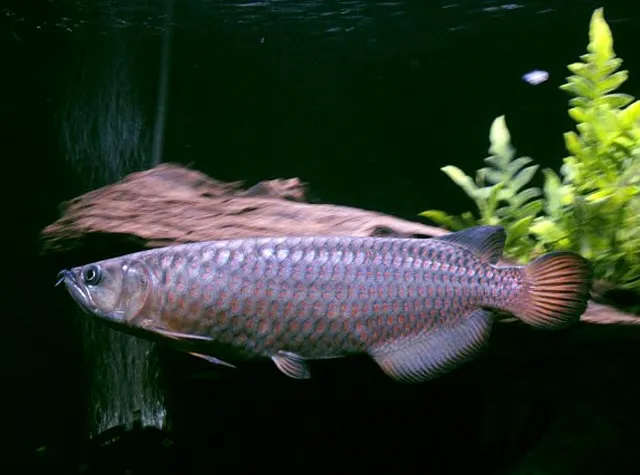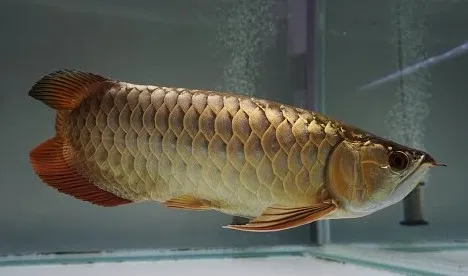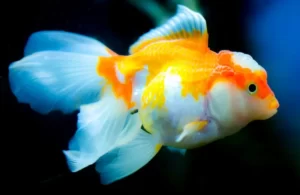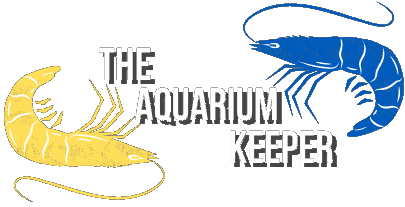
13 Beautiful Types of Arowana: Price, Rarity & Care

Writer at The Aquarium Keeper
When talking about majestic aquarium fish, Arowana species come to mind. There are a lot of different types of Arowana in this hobby, some are more common, while other species can be one of the rarest fish in the world. In this article, I will break down numerous types of Arowana, including their care requirements, price, and more.
General Guidelines For Keeping Arowanas Succesfully
Arowanas, often referred to as “dragon fish,” require specific care to thrive in captivity. Here are some general guidelines for keeping Arowanas successful:
- Spacious Tank: Arowanas grow large and are active swimmers. A spacious tank, preferably upwards of 250 gallons, is essential to provide adequate swimming room.
- Water Quality: Maintain pristine water conditions. Regular water changes, efficient filtration, and frequent monitoring of water parameters are vital to keep Arowanas healthy.
- Varied Diet: Arowanas are carnivorous. A diet rich in variety, including fish, insects, and specially formulated Arowana feeds, is crucial for their nutrition and coloration.
- Surface Coverage: These fish are known jumpers. A tightly fitting and secure lid is necessary to prevent them from jumping out of the tank.
- Tank Decor: Minimal decor is recommended, as Arowanas require ample swimming space. However, some cover in the form of large floating plants can be beneficial.
- Tank Mates: Carefully consider tank mates. Arowanas can be aggressive, especially towards smaller fish. Choose compatible, similarly sized fish to avoid conflict.
- Regular Health Checks: Pay attention to signs of stress or illness, such as changes in eating habits or appearance. Early detection and treatment of health issues are critical.
Remember, each Arowana species might have its unique needs, so it’s important to research the specific requirements of the species you intend to keep.
Types of Arowanas
There are a lot of different Arowana available, and they are often categorized by the continent they are native from. Currently, there are Arowana species available from South America, Africa, Australia, and Asia, and some of them have different color variants. The most noticeable are Asian Arowanas, which have a lot of different colors available, including red, green, silver, yellow, and golden.
Remember to understand, that keeping an Arowana is not a task for a beginner, it takes a lot of knowledge, and a considerable big aquarium to keep it successfully. Some people often make a mistake, and buy an Arowana when it is small, and it usually outgrows its environment.
South American Silver Arowana
The South American Silver Arowana, a dazzling inhabitant of the Amazon Basin, captures the essence of aquatic elegance. This species, with its metallic sheen, is a cherished jewel among aquarists, symbolizing the exotic beauty of tropical rivers.

These Arowanas are known for their fluid, almost ethereal movement in the water, enchanting onlookers with their serene yet powerful presence. They are a captivating addition to any large aquarium, bringing a piece of the Amazon’s mystery and allure into your home.
| Aspect | Information |
|---|---|
| Common Name | South American Silver Arowana |
| Scientific Name | Osteoglossum bicirrhosum |
| Origin | Amazon Basin, South America |
| Coloration | Metallic Silver |
| Size | Up to 3.5 feet |
| Diet | Carnivore - Primarily feeds on smaller fish, crustaceans, and insects |
| Behavior | Known for jumping out of the water to catch prey |
| Minimum Tank Size | 250 gallons |
| Water Temperature | 24°C - 30°C (75°F - 86°F) |
| pH | 6.0 - 7.5 |
| Lifespan | 10 - 15 years |
| Price | Varies by size and quality, generally from $40 to $100 USD |
Embracing the care of a Silver Arowana invites a unique and rewarding experience into an aquarist’s life, although it is recommended only for more experienced fishkeepers. Nevertheless, a South American Silver Arowana is a great choice, if you are just getting familiar with arowanas in general.
South American Black Arowana
The South American Black Arowana stands out in the world of aquatics with its distinctive dark-toned juvenile coloration that gradually transitions to a striking silver in adulthood. This species, native to the Rio Negro basin, brings a contrasting beauty to aquariums, differentiating itself from its more commonly known silver counterpart.

Black Arowanas are known for their slightly more territorial nature, adding an intriguing aspect to their care. They require thoughtful tank management to maintain their well-being and showcase their unique coloration and behavior.
| Aspect | Information |
|---|---|
| Common Name | South American Black Arowana |
| Scientific Name | Osteoglossum ferreirai |
| Origin | Rio Negro basin, South America |
| Coloration | Blackish in juveniles, fades to silver with age |
| Size | Up to 3 feet |
| Diet | Carnivore - Insects, shrimp, and smaller fish |
| Behavior | Capable of jumping out of the water to catch prey |
| Minimum Tank Size | 250 gallons |
| Water Temperature | 24°C - 30°C (75°F - 86°F) |
| pH | 6.0 - 7.5 |
| Lifespan | Up to 20 years |
| Price | Varies, typically from $100 to $250 USD |
Each Black Arowana, with its gradual color change and distinct personality, offers a unique journey into the rich biodiversity of South American waters. Their care provides an engaging challenge for aquarists, fostering a deeper appreciation for the complexity of aquatic life.
African Arowana
The African Arowana, a sole representative of its kind from the African continent, captivates with its olive-green hues and distinctly round-shaped head. This species offers a unique aesthetic, differing significantly from its South American and Asian relatives.

This Arowana variety brings a touch of African aquatic wilderness to aquariums. Known for its more elusive nature and challenging care requirements, the African Arowana is a prized species for seasoned aquarists seeking to diversify their collections. Compared to other Arowana species, the African counterpart is less popular amongst fishkeepers.
| Aspect | Information |
|---|---|
| Common Name | African Arowana |
| Scientific Name | Heterotis niloticus |
| Origin | African continent |
| Coloration | Olive-green |
| Size | Up to 3.3 feet in captivity |
| Diet | Carnivorous as juveniles (insects, crustaceans, mollusks); Omnivorous as adults |
| Behavior | Unique feeding habits; changes diet with age |
| Minimum Tank Size | 250 gallons |
| Water Temperature | 24°C - 28°C (75°F - 82°F) |
| pH | 6.5 - 7.5 |
| Lifespan | Not widely known, varies with conditions |
| Price | Varies significantly, often around $100 - $300 USD |
Nurturing an African Arowana in a home aquarium is akin to embracing a piece of Africa’s diverse aquatic ecosystem. Their presence enriches the aquatic environment, offering both a challenge and reward for dedicated fish enthusiasts.
Australian Pearl Arowana
The Australian Pearl Arowana, hailing from New Guinea and Australia’s clear waters, is distinguished by its dark brown body, enhanced with greenish tints and eye-catching reddish spots on its scales. This species, known as Scleropages jardinii, offers a unique blend of color and character to the aquarist’s world.

Embodying the robust essence of the Australian aquatic environment, the Pearl Arowana thrives in a well-structured habitat, echoing the complexities of its native ecosystem. Their dynamic personality and striking appearance make them a standout addition to any large aquarium setup.
| Aspect | Information |
|---|---|
| Common Name | Australian Pearl Arowana |
| Scientific Name | Scleropages jardinii |
| Origin | New Guinea and Australia |
| Coloration | Dark brown with greenish shades, reddish marks on scales |
| Size | Average 1.8 feet, up to 3.2 feet |
| Diet | Omnivorous - Prefers smaller fish and crustaceans |
| Behavior | Opportunistic eater, territorial and aggressive |
| Minimum Tank Size | 180 gallons |
| Water Temperature | 24°C - 30°C (75°F - 86°F) |
| pH | 6.0 - 7.5 |
| Lifespan | Not widely known, varies with conditions |
| Price | From $250 to $3,000 USD |
The care and keeping of the Australian Pearl Arowana go beyond the basics, requiring an environment that mirrors their natural habitat’s richness and diversity.
Australian Spotted Arowana
The Australian Spotted Arowana, also known as Scleropages leichardti, showcases a unique beauty with its dark brown to olive green back and lighter bellies and sides. The small orange-reddish dots on their large scales set them apart, and are a key difference, compared to the Australian Pearl Arowana.

With a preference for still or slow-moving waters, the Australian Spotted Arowana adds a serene yet powerful presence to an aquarium. Their territorial nature and distinctive appearance make them a fascinating species for aquarists looking to add diversity to their collection. Compared to other Arowana species on this list, this Arowana is one of the more affordable options.
| Aspect | Information |
|---|---|
| Common Name | Australian Spotted Arowana |
| Scientific Name | Scleropages leichardti |
| Origin | Australia, Fitzroy River system |
| Coloration | Dark brown to olive green back, lighter bellies and sides, small orange-reddish dots on scales |
| Size | Up to 2.9 feet |
| Diet | Carnivorous - Feeds on smaller fish and insects |
| Behavior | Highly territorial, prefers still or slow-moving waters |
| Minimum Tank Size | 200 gallons |
| Water Temperature | 24°C - 30°C (75°F - 86°F) |
| pH | 6.0 - 7.5 |
| Lifespan | Not widely known, varies with conditions |
| Price | From $300 USD and up |
The inclusion of the Australian Spotted Arowana in an aquarium brings a fragment of the Fitzroy River system’s tranquil beauty into your home. Their care offers a rewarding challenge, allowing aquarists to connect with a unique aspect of the natural world.
Asian Green Arowana
The Asian Green Arowana, a dazzling jewel from Southeast Asia, is known for its subtle silverish base color that transforms into a mesmerizing fluorescent green under certain lighting. This unique color shift not only adds an element of surprise but also highlights the fish’s graceful movements.

This Arowana variety, often seen as a symbol of luck and prosperity, requires careful attention and a seasoned hand in aquarium management. Its selective eating habits and susceptibility to changes in diet and environment make it a challenging yet rewarding species to care for.
| Aspect | Information |
|---|---|
| Common Name | Asian Green Arowana |
| Scientific Name | Scleropages formosus |
| Origin | Southeast Asia |
| Coloration | Silverish, becomes fluorescent green under specific lighting |
| Size | Up to 3 feet |
| Diet | Carnivorous - Primarily feeds on other fish |
| Behavior | Requires experienced aquarists, can often reject food |
| Minimum Tank Size | 300 gallons |
| Water Temperature | 24°C - 30°C (75°F - 86°F) |
| pH | 6.0 - 7.5 |
| Lifespan | Up to 20 years or more |
| Price | From $2,500 USD and up for small specimens |
Embracing the Asian Green Arowana in your aquatic collection means committing to a journey filled with both challenges and rewards. The beauty and grace they bring to an aquarium are unparalleled, making them a cherished species among dedicated aquarists.
Asian Red Arowana
The Asian Red Arowana stands out in the aquatic community for its strikingly rich red hue, a feature that deepens and intensifies with age.

Caring for this Arowana is a journey that goes beyond routine aquarium maintenance. It demands a deep understanding of its unique needs, making it a symbol of both luxury and the aquarist’s dedication to the craft.
| Aspect | Information |
|---|---|
| Common Name | Asian Red Arowana |
| Scientific Name | Scleropages formosus |
| Origin | Southeast Asia |
| Coloration | Develops flame red coloration as it matures |
| Size | Up to 3 feet |
| Diet | Carnivorous - Primarily feeds on other fish |
| Behavior | Requires experienced aquarists, sensitive to dietary changes |
| Minimum Tank Size | 300 gallons |
| Water Temperature | 24°C - 30°C (75°F - 86°F) |
| pH | 6.0 - 7.5 |
| Lifespan | Up to 20 years or more |
| Price | From $1,500 to $15,000 USD |
Owning an Asian Red Arowana is a true commitment to the hobby, since they cost so much, and are not that easy to keep.
Asian Golden Arowana
The Asian Golden Arowana, often seen as a living treasure, is a breathtaking species from Southeast Asia. Its entire body shimmers in a bright, golden color, making it one of the most coveted and luxurious ornamental fish in the aquarium world.

This Arowana’s rarity and the stunning beauty of its golden scales make it a symbol of wealth and prosperity in many cultures. It’s a species that demands the highest level of care and attention, reflecting the dedication and expertise of its keeper.
| Aspect | Information |
|---|---|
| Common Name | Asian Golden Arowana |
| Scientific Name | Scleropages formosus |
| Origin | Southeast Asia |
| Coloration | Bright, shimmery golden |
| Size | Up to 3 feet |
| Diet | Carnivorous - Primarily feeds on other fish |
| Behavior | Requires experienced aquarists, sensitive to dietary changes |
| Minimum Tank Size | 300 gallons |
| Water Temperature | 24°C - 30°C (75°F - 86°F) |
| pH | 6.0 - 7.5 |
| Lifespan | Up to 10 years |
| Price | From $1,500 to $15,000 USD |
Having an Asian Golden Arowana can truly showcase the skills a person achieved during the years of fishkeeping.
Asian Silver Arowana
The Asian Silver Arowana, unique to the island of Borneo, captivates with its elegant silverish appearance. This distinct variety of the Asian Arowana family is more common, but still an expensive and unique fish.

The Silver Arowana is completely the same species as the Asian Arowana, just a different coloration variant. It is a more affordable type, compared to other Asian Arowanas, and is less appealing in terms of appearance.
| Aspect | Information |
|---|---|
| Common Name | Asian Silver Arowana |
| Scientific Name | Scleropages formosus |
| Origin | Island of Borneo |
| Coloration | Silverish |
| Size | Up to 3 feet |
| Diet | Carnivorous - Primarily feeds on other fish |
| Behavior | Requires experienced aquarists, sensitive to dietary changes |
| Minimum Tank Size | 300 gallons |
| Water Temperature | 24°C - 30°C (75°F - 86°F) |
| pH | 6.0 - 7.5 |
| Lifespan | Up to 20 years or more |
| Price | From $100 to $2000 USD |
The care part is completely the same as other Asian Arowanas. This variant is more suited for people, that are maybe just starting out keeping Arowana fish, and don’t want to get an extremely expensive one.
Asian Red-Tailed Golden Arowana
The Asian Red-Tailed Golden Arowana, hailing from the waters of Sumatra, Indonesia, is an exquisite variant of the Arowana family. Its unique combination of a golden body with a contrasting red tail creates a striking visual display in any aquarium.

This Arowana’s distinguished color palette and the serene grace with which it moves through the water make it a sought-after species for enthusiasts. The Red-Tailed Golden Arowana is a truly beautiful fish, and combined with the right lightning, it can be a good sight for the eyes.
| Aspect | Information |
|---|---|
| Common Name | Asian Red-Tailed Golden Arowana |
| Scientific Name | Scleropages formosus |
| Origin | Sumatra, Indonesia |
| Coloration | Golden with a red tail |
| Size | Up to 3 feet |
| Diet | Carnivorous - Primarily feeds on other fish |
| Behavior | Requires experienced aquarists, sensitive to dietary changes |
| Minimum Tank Size | 300 gallons |
| Water Temperature | 24°C - 30°C (75°F - 86°F) |
| pH | 6.0 - 7.5 |
| Lifespan | Up to 20 years or more |
| Price | Varies, typically higher due to rarity |
Determining the price of this variant is slightly difficult. Some variants can be more unique than others, which is why it is hard to give a price range, but if I had to guess, I would say this variant can cost from the higher part of hundreds, or even a couple of thousand dollars.
Asian Gold Crossback Arowana
The Asian Gold Crossback Arowana, a dazzling inhabitant from Malaysia’s freshwater realms, captivates with its luminous gold scales and distinctive crossback pattern.

Renowned for its opulent appearance, the Gold Crossback is a prized jewel among Arowana varieties. Its care, while demanding, offers a deeply rewarding experience, allowing aquarists to engage intimately with one of nature’s most splendid creations.
| Aspect | Information |
|---|---|
| Common Name | Asian Gold Crossback Arowana |
| Scientific Name | Scleropages formosus |
| Origin | Pahang and Perak, Malaysia |
| Coloration | Gold with a crossback pattern |
| Size | Up to 3 feet |
| Diet | Carnivorous - Primarily feeds on other fish |
| Behavior | Requires experienced aquarists, sensitive to dietary changes |
| Minimum Tank Size | 300 gallons |
| Water Temperature | 24°C - 30°C (75°F - 86°F) |
| pH | 6.0 - 7.5 |
| Lifespan | Up to 20 years or more |
| Price | Varies, often very high due to rarity and demand |
Cultivating a Gold Crossback Arowana provides a unique window into the rich underwater tapestry of Malaysia, infusing the aquarium with a sense of luxury and wonder.
Asian Super Red Arowana
The Asian Super Red Arowana is a captivating species, cherished for its deep red coloration that exudes a sense of mystery and allure. This species, originating from the serene waters of Southeast Asia, is not just an aquatic pet but a symbol of nature’s vivid palette.

Each Super Red Arowana is like a living, swimming gem, embodying the beauty and diversity of the aquatic world. They can literally stand out in any aquarium, due to their intense red coloration.
| Aspect | Information |
|---|---|
| Common Name | Asian Super Red Arowana |
| Scientific Name | Scleropages formosus |
| Origin | Southeast Asia |
| Coloration | Deep red |
| Size | Up to 3 feet |
| Diet | Carnivorous - Primarily feeds on other fish |
| Behavior | Requires experienced aquarists, sensitive to dietary changes |
| Minimum Tank Size | 300 gallons |
| Water Temperature | 24°C - 30°C (75°F - 86°F) |
| pH | 6.0 - 7.5 |
| Lifespan | Up to 20 years or more |
| Price | Varies greatly, typically very high due to rarity |
In terms of pricing, this variant is extremely rare and can be highly expensive, compared to other Asian Arowana species. It is truly a fish for more experienced fishkeepers.
Batik Arowana
The Batik Arowana, also known as the Myanmar Arowana, originates from Myanmar’s Tanintharyi River Basin. It’s known for its unique, wavy scale patterns and Batik-like head markings, making it a standout species in the Arowana family.

This rare and relatively new addition to the aquarium trade has quickly garnered attention for its artistic scale patterns, reminiscent of intricate Batik fabric designs. The Batik Arowana’s distinctive appearance and elusive nature make it a prized species for enthusiasts seeking something truly unique in their aquatic collection.
| Aspect | Information |
|---|---|
| Common Name | Batik Arowana, Myanmar Arowana |
| Scientific Name | Scleropages inscriptus |
| Origin | Tanintharyl River, Myanmar |
| Coloration | Distinctive batik-like patterns on scales |
| Size | Up to 3 feet |
| Diet | Commercial pellets, cut-up chicken, prawns, frozen fish meat, and frozen seafood |
| Behavior | Aggressive and territorial, requires large space for swimming |
| Minimum Tank Size | 250 gallons |
| Water Temperature | 24°C - 30°C (75°F - 86°F) |
| pH | 7.0 - 8.0 |
| Lifespan | Speculated to be up to 20 years |
| Price | Around $2000 - $4000 USD |
Batik Arowana is a quote rare species, and the price speaks for itself. If you are lucky, you might be able to find one for purchase for a couple of thousands of dollars, but, due to their rarity in the fishkeeping hobby, they might be even more expensive.
Frequently Asked Questions
How Many Arowana Are There?
There are known 7 Arowana species on 4 continents, and some of the species have different coloration variants, for example, there are a few South American Arowana colorations, including silver and black, while Asian Arowana species have even more variants.
Which Arowana Is The Largest?
Most Arowana species stay between 2.5 – 3 feet in captivity, but South American Silver Arowana can reach up to 3.5 feet in length. making it the largest Arowana.
Writer's Thoughts
From my own personal experience, keeping an Arowana is a challenging task, that requires huge financial commitment, and extensive fishkeeping knowledge. I would highly suggest evaluating if you have the capabilities for this unique specimen before buying it.

Thank you for reading my blog post. This website was created with the sole intention of providing quality information regarding fishkeeping. I have been in the fishkeeping hobby for 8 years, and through many trials and errors as well as online research I gathered a lot of information, which I want to give back to the community.


Goldfish With Bump On Head: Possible Causes, Dangers & Treatments




